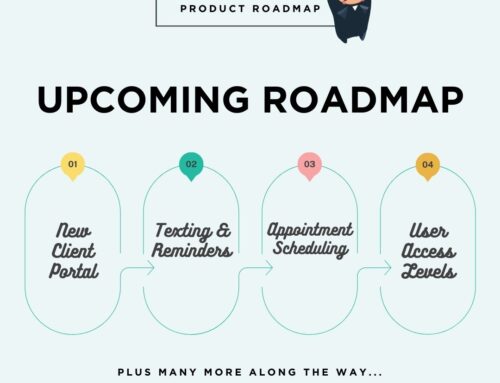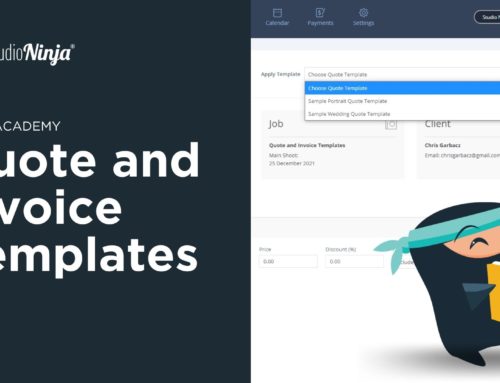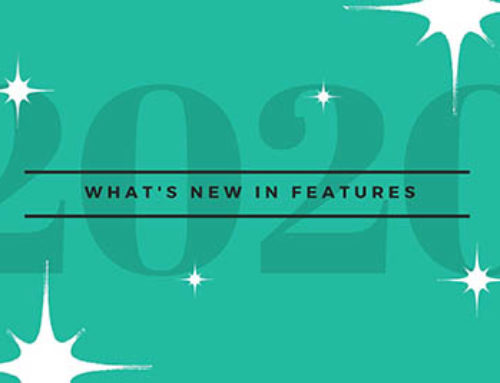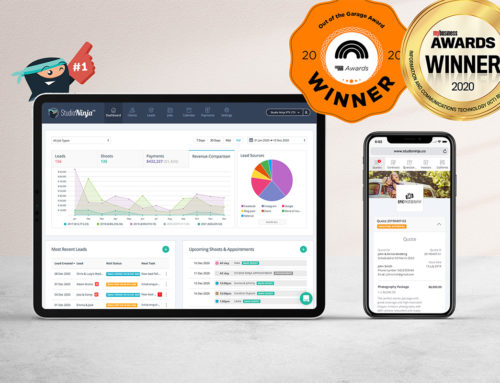Here is your roadmap to photography blogging

You’ve heard it before. I’ve said it before. Photography blogging is great for business. In fact, it’s not just great for business it’s super easy and, if you manage it right, it’s pretty fun too. If you’re not blogging already, maybe you should be. If you are, maybe you just need a few tips on improving it.
Either way, this is my guide to the why, what, how and so forth of photography blogging:
Why to Blog
I covered this in my previous article about why blogging is super important, but just to refresh your memory. Blogging helps you out in a bunch of different ways, some small and difficult to notice, some big, but rare.

Blogging is good for SEO
Search engines love it when you create content, because it helps them figure out what your site is about and the value you provide to your visitors. A site with lots of good content is more valuable to a search engine, and to a searcher, than a site with just a home page and a portfolio. When I started blogging, I immediately saw an increase in my site’s performance, and all I was doing was talking about the wedding shoots I’d been doing. With targeted blog topics, I could have rocketed up even faster.
That’s the other reason that blogging is good for SEO: it gives your site more topics to talk about, which means more people are looking at it. They won’t just be finding “photographers in [your location here]”, they’ll also be stumbling across your posts about choosing a photogenic wedding location, or the importance of regular family photographs. Which brings us to the next point:
Blogging provides value to customers
Even if all you ever write about is your latest job, your blog is providing customers with something valuable: the insight of a photographer. That may not sound like much to you but remember, everything you already know is new to someone, and most of what you know as a photographer is new to anyone who isn’t one.
You can focus on blogs that help your customers in other aspects of their lives, or you can just talk about yourself. You can talk about photography, weddings, family vacations to give them insights and advice they’ve never thought about, or you can talk about your dog, your favourite food and the weather to make them laugh and help them get to know you.
If the only difference between you and a competitor is that the customer knows your dog’s name, you’ve still got an advantage. They know you, and they feel closer to you. If you’ve provided them with tips and life advice, even better.
At the very least, blogs provide context and personality to your business, but they can provide so much more. So that’s why you blog. Then comes the next problem.
What to Blog About
It’s all well and good to say “go out and make a blog”, but I know from experience that all the good intentions in the world don’t get you anywhere when you sit down and can’t think what to write about.

The easiest thing is to say “write what you know”, but to help you remember what it is you actually know, here are a few ideas:
Write about business
When I started blogging, I wrote about the weddings I was photographing. I wrote about the couple, the location and my experiences, and I’d sprinkle a few of my photos in there too. It was simple and, once I got the hang of it, it was easy.
Click here to see an example of my photography blog
There’s no reason you can’t do that too.
Write about your most recent job, or your favourite one. What were you asked to do? What went wrong, and what actually went right? How did you handle the situation? Why did you enjoy it, or why was it a nightmare? Provide some examples of your work and it even becomes a stealth portfolio.
A blog post about your job lets people know more about you, your personality and how you handle situations. It lets them know what they should be prepared for and that they’re in good hands with you. It shows off your work, your capabilities and your value.
Write about photography
If there’s anything you know, it’s photography. No matter how new you are to this, there’s a reason you got into it. Share some of that knowledge with your customers, and at the very least it’ll prove you know your stuff. It’ll also give them more of an idea of what it is you actually do behind that camera, and why you’re so special.
Once they know a bit more about the technique, a lot of people become hooked by the idea of good photography. Even if it’s something they never use themselves, knowing what goes into it makes it more interesting and more appealing.
Write about your customers
Not literally, but write about the things they’re interested in, that you know they’re interested in. People getting married will want new ideas for their own wedding, based on the ones you’ve been to. People getting family portraits will love to know how you get kids to sit still and be quiet.
If you’ve been around a while, you’ll have picked up all sorts of knowledge that you might not even think about. Share it with the people who need it most, and they’ll definitely thank you for it.
These are also the sorts of blogs people search for incidentally, and sometimes that brings in more customers too.
Write about you
What if you have no experience, no prior work and can’t think of anything to say about photography? Well then, write about yourself. There’s nothing more unique than writing about your own life experiences, and it adds personality to your business, putting a face to a name.
People looking for a photographer are looking for someone to capture a very personal part of their life, so it’s important that they get on with that person. They don’t want a wedding photographer who’s going to scoff at their perfect day, or a family photographer who can’t get on with their family. You can’t be expected to love everything that everyone else loves, of course, but if you can show them your personality, and it aligns closely with theirs, they’re much more likely to hire you.
Tips for Making a Good Blog Post
Whatever you choose to write about, there are a few things you can do that will make your blog better. Good grammar and readability are key, of course, but being a pro writer isn’t as important as you might think. It’s what you write about, what you include and how you say it that matter.
Be positive
No-one likes a misery guts, especially not at their wedding or family photo session. People want to work with someone who’s cheery, talkative and fun to be around, or at least one of the above. Even if you’ve chosen to write about your nightmare photo shoot, inject some positivity with humour, and by reminding people of the couple of things that went well. If you absolutely can’t think of anything positive to say, then maybe the blog shouldn’t be written. It’ll more likely come across as just a platform to moan (and probably is).
Include photos
People love visuals. It increases social media performance, advert performance and people’s interest generally in what you’re saying. But above all that, you’re a photographer! What are you doing if you’re not showing off a few of your photos. It doesn’t just improve the look of your blog, it’s a sneaky portfolio too.
Photos also give you the opportunity to be included in Google image searches, and to increase shareability on social media, especially Pinterest. Make sure to alt tag your images so that search engines know what they’re looking at.
Use keywords
If you want your blog to be found in search engines (you do) then you want to include the important keywords in the title, the subheadings, the image alt tags and the text itself. It’s not about forcing it in there where it doesn’t belong, but making sure to include it in the most important parts of the blog will make it stand out much more to search engines and customers alike, which is what will get you noticed.
Getting it Out There
Writing a blog isn’t always enough by itself. If no-one knows about it, how are they going to read it? Part of blogging – a very important part – is getting your blog out there so that it gets read.

I mentioned just above that you should include keywords in all the important parts of your blog. That will help search engines to find it, and to show it to people looking for similar things. That’s just one part of making sure it gets seen, but it is a very important part.
Another thing you can do is share it on social media, if you have a social media presence. Whether it’s Twitter, Facebook, Pinterest or whichever platform you prefer, sharing your blog posts gives your social media more of a purpose, and increases readership.
Another alternative is setting up an email newsletter, if you don’t already have one. Best practices for doing that are something I plan on writing about in future, but if you’re working on a mailing list already, then add blogs as a worthwhile thing to send out to subscribers.
Getting your blog out there and into the world isn’t always easy, and it can be disheartening to see a blog you may have spent an hour or more on getting no attention whatsoever. Don’t be too let down – these things take time and having a backlog still contributes to your site and your business. Never expect to go viral, and always think of the long term benefits as well as the short.
How Often to Blog
The perfect amount of blogging is somewhere between “too much” and “not enough”. That is to say, it really depends. However, some quick advice would be that if you’re not blogging at all, that’s not often enough. Even if you’re super busy, try and find a small amount of time just to put a short blog out there.
The other, significantly rarer, problem is blogging too much. Blogging on a daily basis works for some people, especially if you’re in the habit of sharing shorter blogs about your own life. However, do remember that time spent blogging could also be used improving your business in other ways, so don’t let it take over your business completely. Blogs are important, but they don’t do all the work by themselves.
So make sure you blog often enough that your site doesn’t look dead, and not so often that you’re letting your business suffer.
Alternatives to Blogging
As much as I’ve said it is, blogging isn’t necessarily for everyone. I think it’s a great tool, and I think that if you haven’t considered it, you definitely should. But, there are other tools out there that do similar things, and might be more suited to your personality. If you’re already spending a lot of time on one of these, or just can’t imagine yourself being a blogger, consider these alternative ways of spending your time and effort.
Social Media
Having a social media following is a lot like micro-blogging, and in some cases that’s literally what it is. It gives you the chance to talk directly to potential customers and other photographers, to show off your personality and to give people a behind the scenes look at who you are and what you do.
If you’re spending a lot of time building a social media presence, or have one already, then blogging may not even be necessary for you. Or it might be something you should consider down the line when you’re more stable or less busy.
If you don’t have a social media presence already I’d advise that it’s a lot more difficult to build and maintain than a blog, but if it’s for you then it’s for you. Consider it an alternative with a similar style, even if the advantages are slightly different.
Email Newsletters
Email newsletters and blogs often go hand in hand. They’re the perfect delivery tool for a blog, and if you’re building a subscriber list, chances are that you’re already sending them a mini blog with every email anyway. It’s just a formality to actually create a permanent home for them.
However, not all email ‘blogs’ work well when hosted on a website, and if you’re doing something special like 10 stock photos per week then you’ll want to incentivise people to sign up to an email rather than just cribbing from your blog posts.
Like social media, I believe that an email subscriber list is harder to build than a blog, and the benefits are not exactly the same, but if it’s working for you the way it is then who am I to argue? Again, consider setting up a blog in future when you have more time and the ability to commit to it.
Guest Blogging
Blogging, but for somebody else’s site. It sounds silly at first, but a guest blog has all sorts of advantages that a personal blog doesn’t.
For starters, writing for someone else’s blog guarantees an existing and engaged audience. If you’re a wedding photographer then being featured on a wedding planner’s blog is the perfect way to put yourself in front of loads of brides who are already looking for your services, and you don’t have to go to the effort of building that regular audience yourself. They’re already there, waiting for you.
That’s the other great part of guest blogging – you don’t have to commit to it. If you want to blog, or only have a few good ideas, then it gives you the opportunity to write a blog and get it seen without having to commit to a long term plan.
The disadvantage, of course, is having to share your audience with someone else. If your post is a big hit, you can only take partial credit for it, and a lot of people won’t even necessarily know you wrote it. If you later want to start your own blog, you don’t have those initial guest posts to prop you up, and people visiting your site won’t get to see them either.
Guest blogging is a great way to tap into someone else’s audience and put ideas out without committing to a long term blog. It’s not a long term alternative to your own blog, but a chance to get a short term benefit from blogging when you don’t have time to commit to a long term plan.
Go Forth and Blog
So hopefully this has given you some ideas for starting your own blog, and convinced you of the value of it. It’s easy and hard at the same time: easy to get started, but hard to commit to. Easy to want to write, but hard to think about what to write. Easy to see the end results, hard to wait for them.
Get started now and you’ll find it’s easier than you thought it was, with just a little patience and hard work.
Go forth, and blog!






